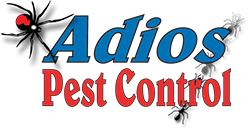Argentine Ants
ID Tips
Body hairs are sparse, no circle of hairs on tip of abdomen; this is one of many black ants found around the home.
Feeding Habits
This ant will feed on a wide variety of foods and is partial to sweets. Indoors, the Argentine ant may literally invade any accessible food item, thus contaminating it. The ants locate any suitable food very quickly and will recruit hundreds of workers to the site, resulting in an ant infestation in short order.
Key Inspection Tips
Argentine ants are active foragers and forage in trails of thousands of workers. These trails can usually be located without too much difficulty along sidewalks and foundations and up the sides of buildings outdoors. The soffits and fascia boards of a home are important inspection sites as these ants can be seen trailing along eaves.
Outside
Argentine ants readily forage along tree and shrub branches and utilize cables and wires to enter structures. When the branches of trees and shrubs brush against the structure, the branches should be pulled away from the building and checked for workers trailing from the branches onto the building. When inspecting for Argentine ant trails, the grass and/or mulch should be pulled or raked away from the foundation and from along the edges of driveways and sidewalks. Mulch, especially when in thick layers, should be raked back from the bases of trees and shrubs to check for ant colonies. Any log, stone, firewood, trash, stones, bricks or other debris must be inspected underneath for colonies. Avoid inspecting for Argentine ant trails outside during the hottest part of the summer day, as foraging activity drops to a very low level.
Inside
Argentine ants trail along baseboards and are commonly found trailing under the edges of carpets. If the ants are entering from under the wall, the outside foundation and walls on the opposite side require inspection to determine if the trail is from an outdoor colony. If not, the colony may be located inside the wall. Workers also follow pipes and electric wires inside walls to move from one room to another. Foragers seen emerging from electric wall outlets require close inspection of wall outlet boxes.
Contributing Conditions
Areas of excess moisture should be corrected. Branches of trees and shrubs need to be cut away from the structure’s roof and walls. As many cracks in the exterior walls as possible need to be sealed. Lumber, bricks, stones, logs and trash should also be removed. If possible, a vegetation-free border should be created around the base of the foundation to make the area less attractive to ants. This vegetation-free zone should contain gravel or small stones and not bark chips for mulch. Mulch and bark chips hold moisture and serve as ideal nesting sites for most pest ants.
Call Adios Pest Control to arrange for one of our San Diego pest control experts to come help you exterminate your ant problems
